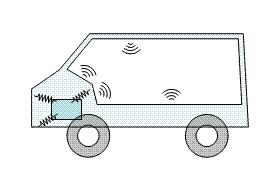Vehicle Engine Idling Vibration Analysis
Summary
The phenomenon is a natural vibration of a vehicle body and/or an acoustic field (air) in the vehicle cabin, which is caused by the fluctuation of engine revolution in idling condition as an input force inducing torsional vibration of its powertrain and/or vibration of its suspension system or the vibration transmits through hard points of the system mentioned above.

The different features from the low frequency booming noise are as follows.
- Rather easy to diminish the vibration by appropriate array of resonance frequencies between engine rigid modes and body elastic modes since an engine speed is constant in idling condition.
- Easy to control the vibration by adding large damping device to the powertrain system and/or body at specific frequency range of idling vibration.
- If the phenomenon is observed on the vehicle with automatic transmission, vibrational transmission characteristics are totally different at Drive range from Neutral range and this causes contrasting vibrational behaviors at the ranges respectively.
It, however, requires to conduct physical test for understanding properties of relevant components and develop its CAE model, which is also needed for low frequency booming noise model development. Furthermore, modeling technologies from component level to its assembly vehicle are necessary.
The company has a substantial know-how and expertise for the physical test as well as CAE modeling technologies.
Relevant analysis and elemental technology
- Hydraulic Mount Modell
- Extended Maxwell Rubber Mount Model
- Rubber Mount Model Referring to Table of Amplitude & Frequency Dependency

